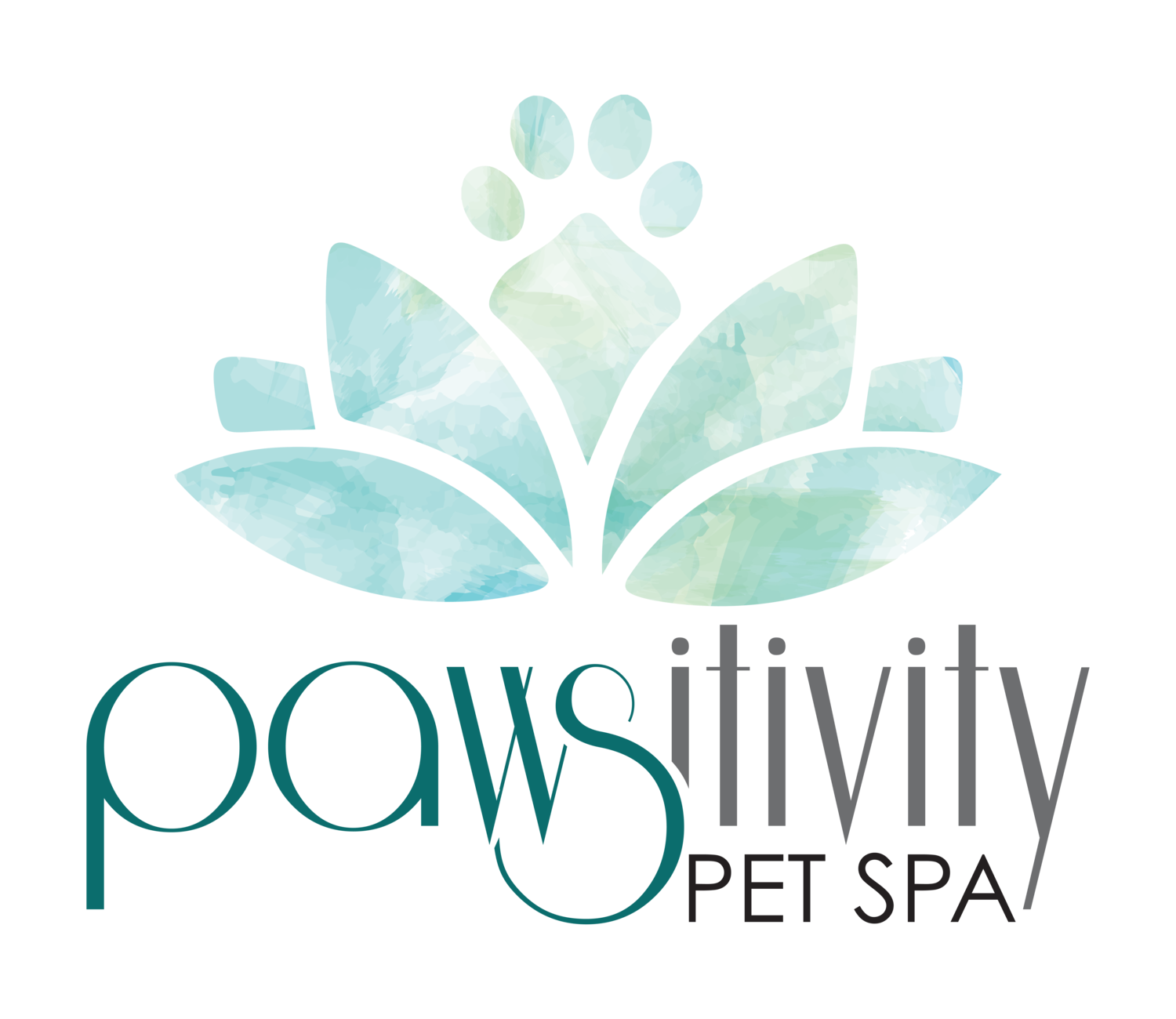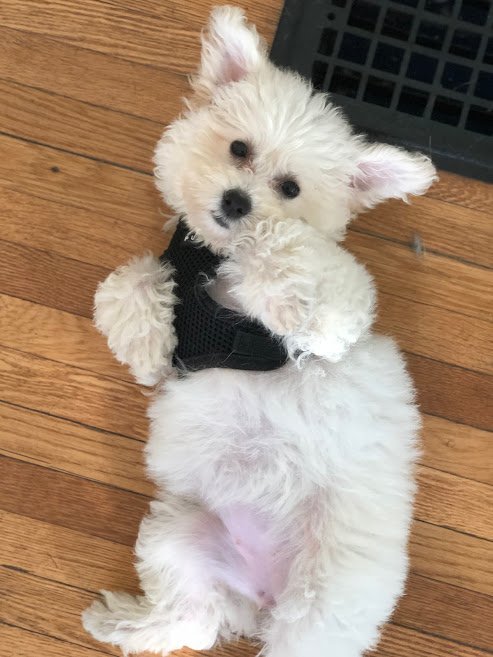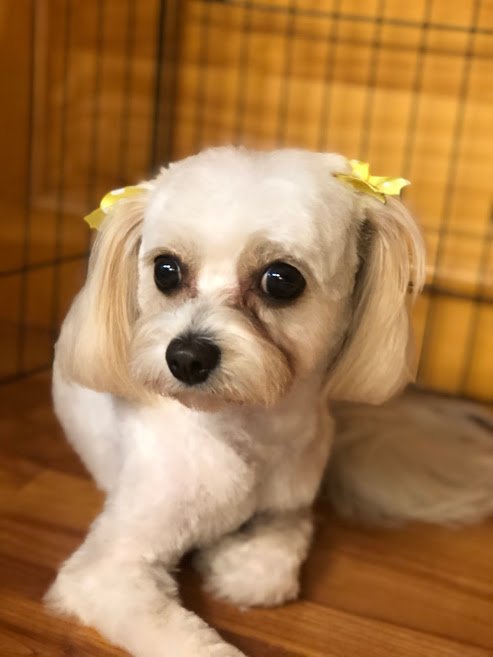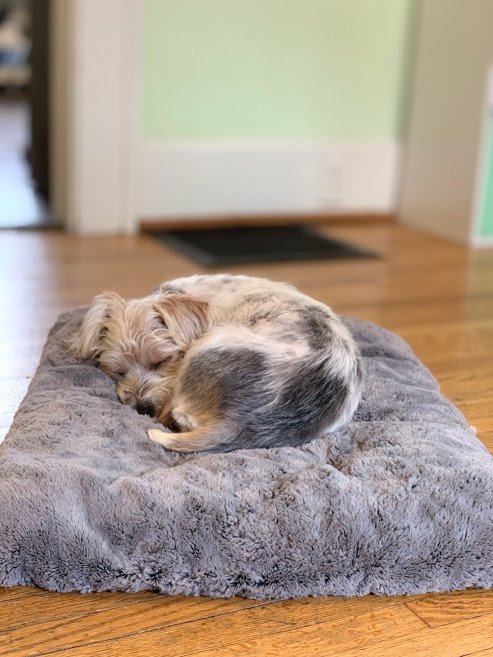Talk to Me: Understanding Your Dog's Language
As all loving dog owners know, dogs are expressive, emotional creatures. Their language is elaborate and sophisticated, using eyes, ears, mouths, tails, fur, and body posture.
At Pawsitivity, we love getting to know our four-legged clients and being able to communicate with them in their own language. They love feeling understood! Of course, to truly interpret what any dog is saying, you must take their behavior in context. So please use caution and common sense when approaching or communicating with any dog.
Describing every mood and its signals would be enough to fill a book, but we want to share with you a few of the lesser-known signals your dog may be giving you.
The happy roll
Some dogs do this when they’re feeling content, usually after a meal or a long walk. They go out into the yard and "itch" their backs on the grass, tail wagging and belly up. We love this one!
The yawn
Offered as a calming signal between dogs, or even between human and dog, a yawn says, "Hey, just relax, I'm cool." The dog may be a little unsure of another dog's intentions, and wants to assure him that he does not want to start a quarrel.
When a dog is communicating with a human, a yawn often means that he doesn’t like what you are doing, but doesn’t want to challenge your authority. In the grooming environment, we occasionally see this when brushing or drying -- usually from a dog who knows us well. It is a way to complain without being aggressive.
If a dog who doesn’t know you well gives a dramatic yawn, this is a clear warning. He may actually bite you. It’s best to stop what you are doing and move away.
The thinker
Lying with one paw tucked under or with front paws crossed, your dog is signaling that she is comfortable and relaxed, but alert. She’s interested in what’s going on and will often hold her head up high to watch the action. (If she wasn’t comfortable, she would keep all four paws on the floor so as to be ready to spring into action if needed.)
Rachel’s dog Jessie, when at the spa, spends most of the day in this position, lying with her paws crossed and observing the goings-on.
The curl-up
When completely relaxed, your dog will lie curled up on his side or even on his back. This communicates comfort and a feeling of security. He is simply enjoying life; he has no worries!
The stare
While we love to imagine it's devotion that makes our fur babies stare intently at us, they're likely looking to us for direction or with desire for food, treats, or attention. Staring between dogs, or between a dog and a human she doesn’t know, is a sign of dominance or aggression.
Because of this, a dog is unlikely to maintain eye contact with a new owner or any person she doesn’t know well. But over time, as the dog learns to trust you, she is very likely to stare at you. Dogs' ability to read our body language is part of why they evolved into the domesticated companions they are today.
If a dog -- including your own -- seems uncomfortable, do not maintain eye contact. Staring them down communicates that you are asserting dominance, which in a dog’s language is an attempt to start a conflict.
The smile
Dogs who smile are one of our favorite things, because it shows how far a dog will go from his own communication standards just to communicate with humans.
In their own language, dogs never show teeth except to communicate aggression. However, some dogs who are particularly in tune with human communication will occasionally pull their lips back and show all their teeth in what looks like a snarl. They are actually imitating our smiling communication between humans, and are saying that they like you and are happy to see you.
The way to know whether this is the dog’s intent is to look at his overall body language. Often a true smile is accompanied by a sneeze! If the dog is not maintaining eye contact, his body is loose, his tail is wagging side-to-side, and he is showing his teeth and sneezing, he is smiling at you! If he is showing teeth with a tense body, his tail is up or down, and he is staring at you or looking at you from the corners of his eyes, that is aggression.
Here at the spa, these non-verbal communications are fascinating and very useful to us. We encourage you to brush up on dog body-signals, particularly if you have children. Dogs never bite without warning, so knowing the warning signs -- especially the subtle ones -- can make our cohabitation with dogs safer. They do their best to learn our language, so it's a kindness for us to do the same!
Please remember to exercise caution with all unfamiliar dogs. Listen to and respect the signals your dog gives you. Especially those looks that say "treat, please!"






